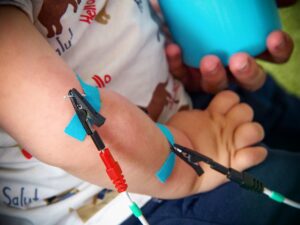A look at the treatment of movement disorders caused by damage to the nervous system
During the treatment of patients with movement disorders, I am often asked about the possibilities and effectiveness of various procedures to improve movement. With today's medicine, treatment is primarily based on a specific diagnosis which, in the event of damage to the nervous system, is determined by a neurologist. The diagnosis of damage to the central nervous system is most often carried out by means of clinical examination; imaging examinations of the brain or spinal cord, or other auxiliary examinations (lumbar puncture, blood samples, examination of so-called evoked potentials and others). In peripheral nervous system damage, the diagnosis is most often based on clinical and electromyographic examinations.
In general, the sooner a patient receives a form of treatment, the more effective it is. This is most evident in acute conditions, but it also applies to the later stages of a disease. This also applies to our Ac-tive® method, which has allowed large numbers of patients with impaired movement to improve motor function more quickly. The best results are achieved if patients reach us in time, preferably within one month of seeing the first symptoms of movement disorders. Conventional treatment of nervous system damage involves various rehabilitation procedures. It is advisable that patients suffering from reduced mobility do not just rely on our method, but also use other effective treatments alongside it, especially targeted physiotherapy. In our opinion a comprehensive approach leads to successful treatment, and ideally it should be managed by a rehabilitation doctor. This coordinates all forms of treatment that the patient undergoes so it is possible to achieve maximum improvement in movement while not overloading the damaged structures.
At present, more than 170 people with various forms of paralysis have been successfully treated with our Ac-tive® method, and we also have video documentation and other forms of tests to verify the clinical effects. Most of the patients currently undergoing treatment also have functional examinations in the kinesiology laboratory of the rehabilitation department of the University Hospital in Olomouc, where our results aattempt to prove general validity. In the last two years, we have trained acupuncturists in our method, so that it is possible to perform these applications in more parts of the Czech Republic. Courses for doctors are used for postgraduate education.
More information about the method at:: info@ac-tive.cz





